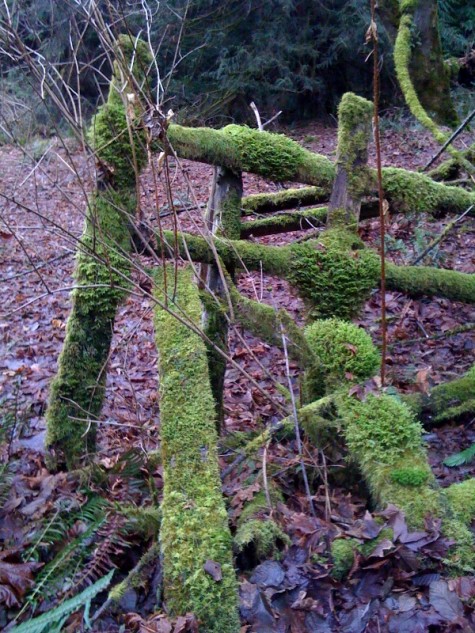
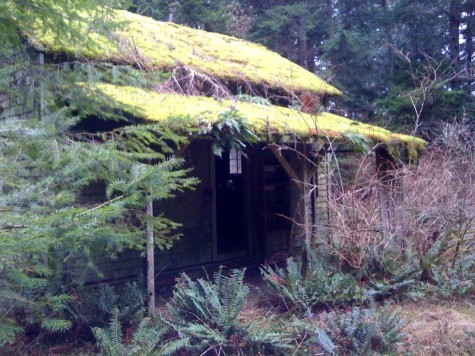

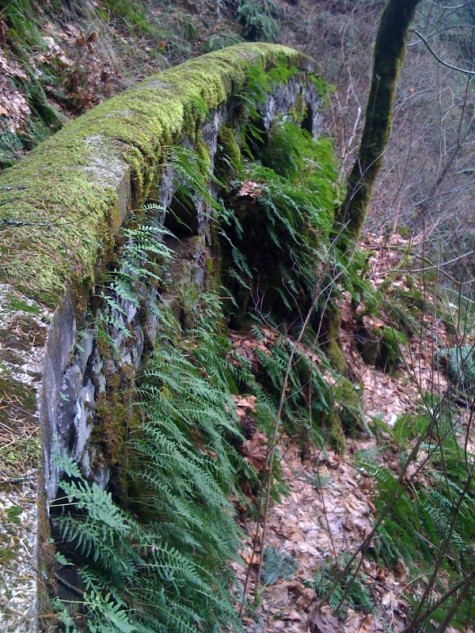

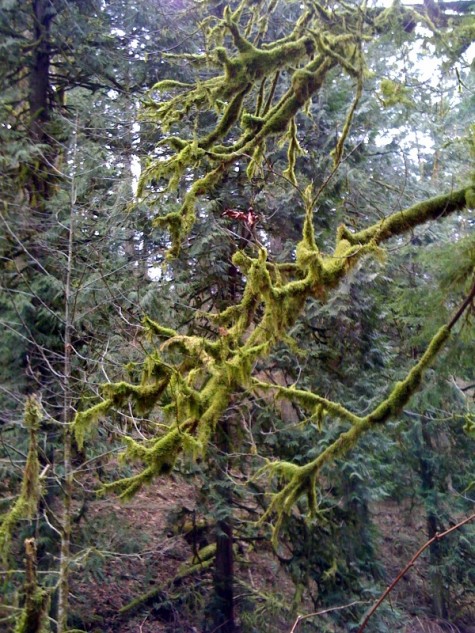
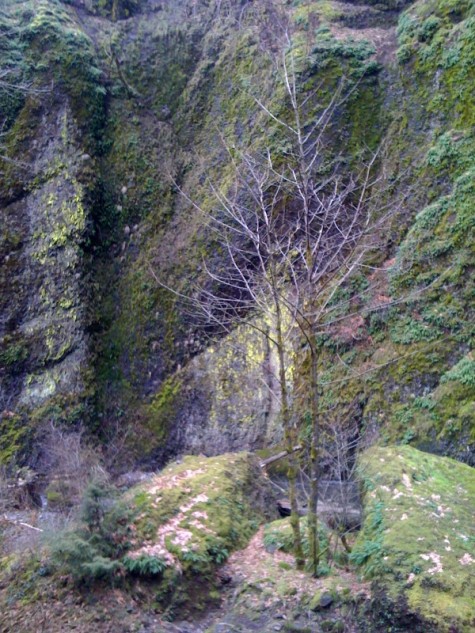
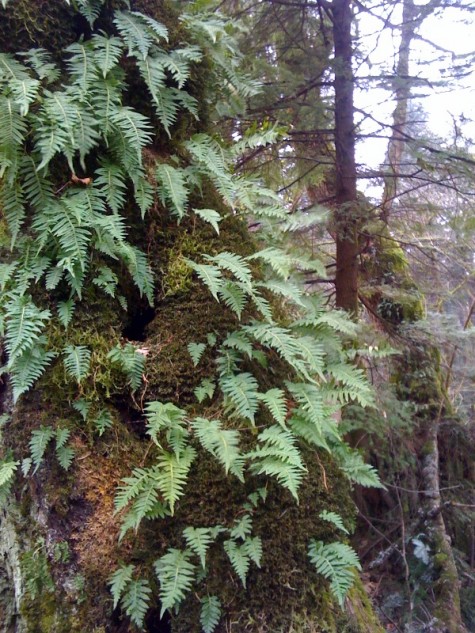
These great photographs are courtesy of Rob Yedinak.
Deborah Silver is an accomplished and experienced landscape and garden designer whose firm first opened its doors in 1986.








These great photographs are courtesy of Rob Yedinak.
 We’ve had a run of unseasonably warm weather that has helped to make a major overhaul of the outdoor spaces a lot easier. We have another week yet to go on that giant project. But today the rain blustered its way in-not that I mind. The front gardens have tulips sprouting; I like to see them get a good drink once they break ground. Weather is an important design element in garden making-I feel lucky for this. Barring distructive weather, I like how nature changes the channel. It is so interesting to see what the rain makes of how we have put the collection together.
We’ve had a run of unseasonably warm weather that has helped to make a major overhaul of the outdoor spaces a lot easier. We have another week yet to go on that giant project. But today the rain blustered its way in-not that I mind. The front gardens have tulips sprouting; I like to see them get a good drink once they break ground. Weather is an important design element in garden making-I feel lucky for this. Barring distructive weather, I like how nature changes the channel. It is so interesting to see what the rain makes of how we have put the collection together.
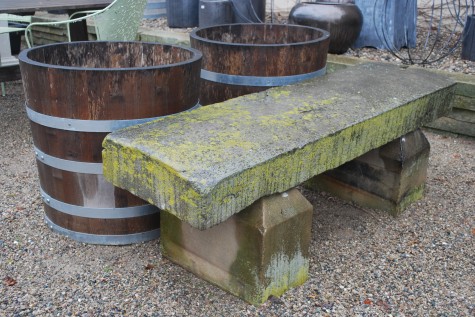
I am likely to keep writing for a while about collecting-its part of what I do. I also have a keen interest in how and what gardeners collect. Collections are somewhat about scale and emotional cache-100 beans of assorted varieties on display has a much less dramatic impact than 100 corgis running. This probably accounts for why I do not have a hellebore collection-I have masses of white and green hellebores of varying species and cultivars. The mass makes the statement, not the specific plant. I am sure you know by now I am not a plant collector-I have other things in mind. As in the relationship of these modern Belgian elm barrels, with this 19th century English stone bench. Round shapes versus rectangular-there is a face off right up front. New and old in proximity-interesting. The rain makes much of, and magnifies color relationships. The galvanized steel bands on these barrels repeat that wet limestone grey. A satisfying discourse here.
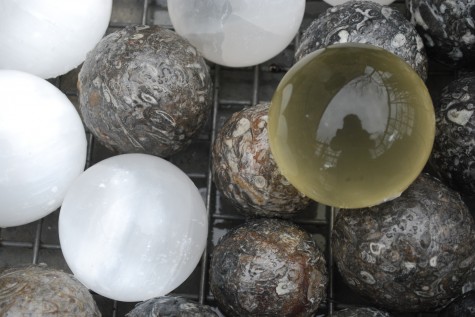 The music of the spheres-I am a fan. I collect them-to this I confess. What gardener could pass up an allium? I have spheres made of grass, steel, seed heads, limestone, boxwood, mineral; there is something about the stability and beauty of a sphere that makes them so satisfying in a garden. These stone and glass spheres-where might they find a home? In the landscape, or on the kitchen table-take your pick. Rain wet stone, by the way, is really beautiful.
The music of the spheres-I am a fan. I collect them-to this I confess. What gardener could pass up an allium? I have spheres made of grass, steel, seed heads, limestone, boxwood, mineral; there is something about the stability and beauty of a sphere that makes them so satisfying in a garden. These stone and glass spheres-where might they find a home? In the landscape, or on the kitchen table-take your pick. Rain wet stone, by the way, is really beautiful.
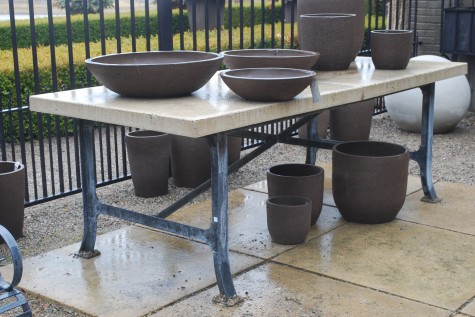 Some elements of the spring collection get here strictly on the basis of their presence-on their own. You shut your eyes, and cross your fingers, that when a collection of pots arrive, they make themselves at home, without going sleepy. I value anything that asks for my attention in a strong way. How they come to make friends at the shop is a process of trial and more trial. This Belgian steel garden table with a concrete top works with these dark and textured pots like I hope for things to work. The late light on the rims of these pots recall the blue steel. The relationships between the shapes-music. The drenching March rain makes every gesture look better.
Some elements of the spring collection get here strictly on the basis of their presence-on their own. You shut your eyes, and cross your fingers, that when a collection of pots arrive, they make themselves at home, without going sleepy. I value anything that asks for my attention in a strong way. How they come to make friends at the shop is a process of trial and more trial. This Belgian steel garden table with a concrete top works with these dark and textured pots like I hope for things to work. The late light on the rims of these pots recall the blue steel. The relationships between the shapes-music. The drenching March rain makes every gesture look better.
 I have some very chunky and fluidly finished granite benches-from our neighbor, Canada. Stone so thick and expertly rock faced-beautiful. Those rustic cylinders I have been writing about-you are seeing their wet incarnation. These objects make for a relationship that will attract attention. Once I see a gardener fall for something, I understand the process of deciding how and where that object might fit.
I have some very chunky and fluidly finished granite benches-from our neighbor, Canada. Stone so thick and expertly rock faced-beautiful. Those rustic cylinders I have been writing about-you are seeing their wet incarnation. These objects make for a relationship that will attract attention. Once I see a gardener fall for something, I understand the process of deciding how and where that object might fit.
 A pair of very old forged steel snake bench supports-I forget how I came by them. Buck made a new back and seat from white oak, and put back together what age and neglect threatened with a trip to the scrap yard. These old snakes look handsome in concert with these dry cast limestone deco urns-don’t you agree? Someone will come along, and love this look for their garden. There might be something about it that adds to their collection.
A pair of very old forged steel snake bench supports-I forget how I came by them. Buck made a new back and seat from white oak, and put back together what age and neglect threatened with a trip to the scrap yard. These old snakes look handsome in concert with these dry cast limestone deco urns-don’t you agree? Someone will come along, and love this look for their garden. There might be something about it that adds to their collection.

We have shopped for garden ornament in England regularly for the past 15 years. Their garden history I greatly admire and value. What we retrieve and bring over always seems to move in with us -without fanfare. This vintage English trestle table is home to plenty of diminuitive plant species of the lichen/moss sort-a gorgeous old garden table. Is this table appalled by its complement of French contemporary chairs-not in the least bit. The Brits-the gardening Brits-really friendly.
Anyone who collects devotes lots of time and thought to their collecting-I am no different. How a garden collection I put together gets integrated into a garden-this is all about what it is to have a relationship with other gardeners. My gardening community-I would not give it up for anything.
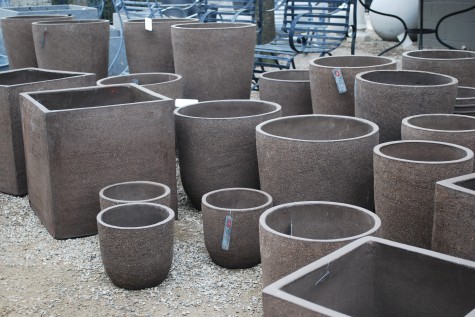 Creating and arranging a collection is a passion known to many, not just gardeners. Even the most hard line minimalist collects their empty spaces as if empty spaces were on the endangered list; yes? Gardeners collect seeds, tools, hellebore cultivars, rocks, birdfeeders, trees-you get the idea. I have amassed a collection of books in the past 25 years that must number over a thousand volumes by now. It is a long standing coherent collection documenting my adventures as a gardener. Putting together and arranging a coherent collection for my shop is a big part of being able to advise people about how to design their gardens.
Creating and arranging a collection is a passion known to many, not just gardeners. Even the most hard line minimalist collects their empty spaces as if empty spaces were on the endangered list; yes? Gardeners collect seeds, tools, hellebore cultivars, rocks, birdfeeders, trees-you get the idea. I have amassed a collection of books in the past 25 years that must number over a thousand volumes by now. It is a long standing coherent collection documenting my adventures as a gardener. Putting together and arranging a coherent collection for my shop is a big part of being able to advise people about how to design their gardens.
 Every year’s collection for Detroit Garden Works is different. It might be based on one particular object whose size, surface, shape or style or aura proves to be a magnet for Rob’s attention. Alternately, his basis for a collection might be triggered by a place he has visited or an idea that’s surfacing. We made a conscious effort to shop the US for antique, vintage and new things a few years ago. Thus the collection always has a strong American element. An organizing metaphor-we like these. His point of view about what is beautiful is a catalyst for a constellation of pots, sculpture, prints, garden furnishings, fountains-any object which might evoke a little magic for a garden.
Every year’s collection for Detroit Garden Works is different. It might be based on one particular object whose size, surface, shape or style or aura proves to be a magnet for Rob’s attention. Alternately, his basis for a collection might be triggered by a place he has visited or an idea that’s surfacing. We made a conscious effort to shop the US for antique, vintage and new things a few years ago. Thus the collection always has a strong American element. An organizing metaphor-we like these. His point of view about what is beautiful is a catalyst for a constellation of pots, sculpture, prints, garden furnishings, fountains-any object which might evoke a little magic for a garden.
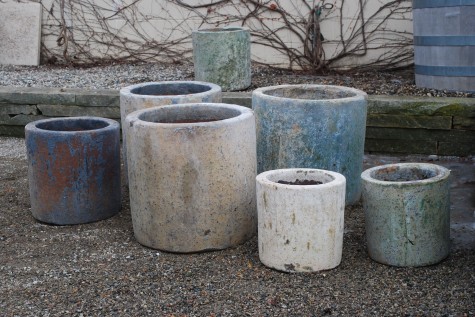
These clay cylinders are all about what Rob calls a chamaeleon surface. In addition to their gritty texture, the color changes given the light. After last night’s rain, the color was saturated and rich-different than their dry color. Mineral surfaces exploring color and texture such as this will be friendly to no end of different kinds of plants. Pots of simple shapes makes the color and texture the most important element. These pots will take on the atmosphere of its placement, and plants, and play a serious supporting role in big visual scheme of things.
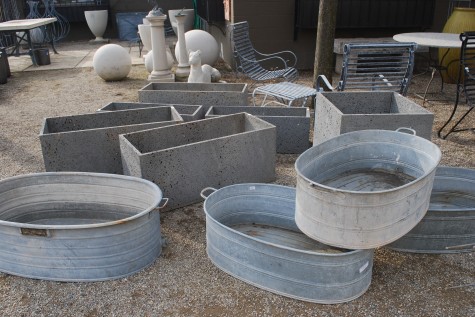 These rectangles made from thin slabs of volcanic rock are close in color, shape and size to these oval galvanized tubs. Their differences give the eye a workout. I am seeing his idea become tangible. A collection of objects of simple and varied shapes distinguished by their interesting surfaces are what I would call a visual variation on a theme.
These rectangles made from thin slabs of volcanic rock are close in color, shape and size to these oval galvanized tubs. Their differences give the eye a workout. I am seeing his idea become tangible. A collection of objects of simple and varied shapes distinguished by their interesting surfaces are what I would call a visual variation on a theme.
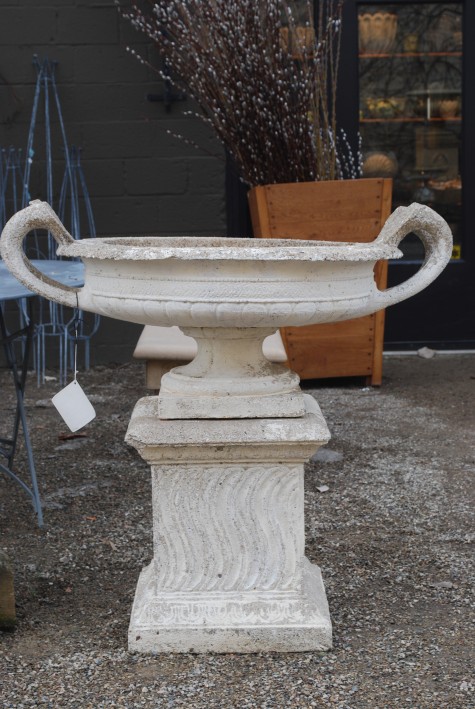 A pair of very old and fine American urns and pedestals dating from the early twentieth century focuses my attention on their shape and surface-and away from a historical label. In another context, I would see them as very traditional American garden ornament. In Rob’s context, kept company by a family I would not have imagined, I am looking at them in a different way. The impossibly wide and low shape of the urns, the simple swirls indented in the pedestals-I am thinking about the universality of beautiful objects for gardens-never mind their age, period, or label.
A pair of very old and fine American urns and pedestals dating from the early twentieth century focuses my attention on their shape and surface-and away from a historical label. In another context, I would see them as very traditional American garden ornament. In Rob’s context, kept company by a family I would not have imagined, I am looking at them in a different way. The impossibly wide and low shape of the urns, the simple swirls indented in the pedestals-I am thinking about the universality of beautiful objects for gardens-never mind their age, period, or label.
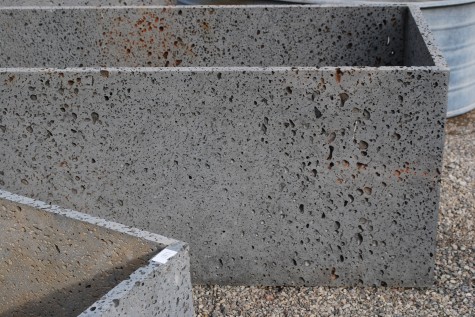 Volcanic rock in its natural state-this I am used to seeing. Volcanic rock slices are a product of modern technology. I have not seen this before. The intersection of ancient materials transformed by modern technology-Rob has gotten my interest. This I admire about him so much; he posits lots of questions to whomever might be interested- without fanfare. He assumes that gardeners are a group in touch with the physical world, and provides them beautiful choices. Alternative choices.
Volcanic rock in its natural state-this I am used to seeing. Volcanic rock slices are a product of modern technology. I have not seen this before. The intersection of ancient materials transformed by modern technology-Rob has gotten my interest. This I admire about him so much; he posits lots of questions to whomever might be interested- without fanfare. He assumes that gardeners are a group in touch with the physical world, and provides them beautiful choices. Alternative choices.
 This Austin and Sealey sculpture from 19th century England was minutes from being moved as I took this picture. I liked the old hand carved stone backed up by a contemporary Belgian elm barrel-why would I go there? I am looking at shapes and surfaces without regard to the sentiment of a given period-many thanks to Rob. It is the best of what I have to offer as a designer-a gardeners point of view, without any predicatable baggage.
This Austin and Sealey sculpture from 19th century England was minutes from being moved as I took this picture. I liked the old hand carved stone backed up by a contemporary Belgian elm barrel-why would I go there? I am looking at shapes and surfaces without regard to the sentiment of a given period-many thanks to Rob. It is the best of what I have to offer as a designer-a gardeners point of view, without any predicatable baggage.
A major reconfiguration of the shop is a major effort. We do this every spring. Spaces get emptied, cleaned-raked and ready to redo and live new- a dream come true. Every new gardening season warrants new thinking-we try to oblige. The driveway is congested with things from this show or that, that source or this vintage shop in Virginia-if you have an interest in how Rob spent his winter, come and look around.

I do not have to do that much work to figure out where Rob is going; not really. No one could possibly love their I-phone as much as he does. The internet/photo capability of that phone has set him free. I get indundated by the photographs he takes-everywhere he goes. client’s homes. trips. vacations-ok, busman’s holidays. buying expeditions. random thoughts. By the time the winter is coming to a close, I have a huge photographic record of his collecting. He prints and posts the pictures he has sent me on a big wall in the workroom. I have advance warning. But this does not truly prepare me for what gets unloaded here in the spring . The evidence and impact of his collecting-it will take me a season to absorb.
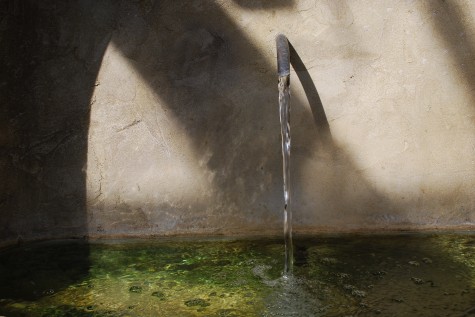 Our weather has taken a decidedly balmy turn the past few days; we have temps in the fifties. I expect it will take a turn for the worse sooner or later, but today I am enjoying the sun. The cold, snow and ice of a Michigan winter is usually bearable, but the grey could make you black out. I am always ready for some sun. I was outside today with no coat, enjoying that sun. Even indoors, the light is brighter and stronger. The days are longer. I welcome the reappearance of the sun. The season is changing-delightful.
Our weather has taken a decidedly balmy turn the past few days; we have temps in the fifties. I expect it will take a turn for the worse sooner or later, but today I am enjoying the sun. The cold, snow and ice of a Michigan winter is usually bearable, but the grey could make you black out. I am always ready for some sun. I was outside today with no coat, enjoying that sun. Even indoors, the light is brighter and stronger. The days are longer. I welcome the reappearance of the sun. The season is changing-delightful.
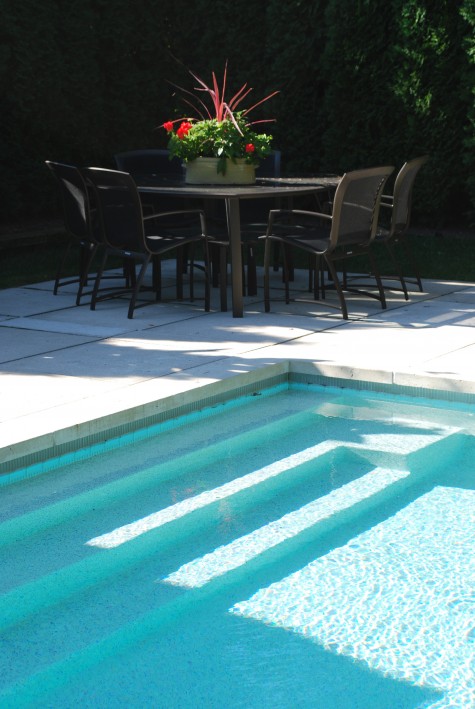
Sunlight is essential to living things. Books are written and lists made of those plants that tolerate shade. The unspoken implication here-nothing living loves the dark. When I was young, I killed many a shade tolerant perennial thinking it was shade loving. I am in discussion with a client now about a design for a pool, so there has been much talk about sun and games. Sunny and shady. Imagine your life long enough to see what, where, and how you want to live outdoors.
 Water one observes can be sited in a number of places. Shadier locations will provide perfect conditions for mosses and other water loving plants to take hold. Shading 75% of the surface of a pond will not only provide refuge for fish, but it will make the job of balancing the pond ecologically much easier. For those that have an aversion to cleaning a pond mechanically, an understanding of the role of the sun is essential. Read up. A fountain burbling in the shade can be peacefully overrun with everything that blows in and takes up residence-beautiful. Sunny water-don’t you want to get in?
Water one observes can be sited in a number of places. Shadier locations will provide perfect conditions for mosses and other water loving plants to take hold. Shading 75% of the surface of a pond will not only provide refuge for fish, but it will make the job of balancing the pond ecologically much easier. For those that have an aversion to cleaning a pond mechanically, an understanding of the role of the sun is essential. Read up. A fountain burbling in the shade can be peacefully overrun with everything that blows in and takes up residence-beautiful. Sunny water-don’t you want to get in?
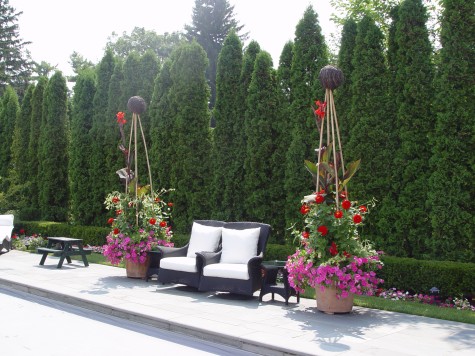
Pools for swimming are another topic altogether. The right siting for any activity outdoors-look to the sun. I want to swim in the sun-water is cold, even in midsummer. Enjoying a sunny July day at pool side-fine, for a while. Watching kids play in a pool, or having lunch outdoors-a shady spot is a good idea.
 White or light surfaces poolside will reflect sunlight, and be cooler for bare feet. Reflected heat and light will dry you off in short order. Drying off in the sun-like being on vacation. If you are old enough to remember putting sheets on a bed that have been sun dried on a clothesline-this a simple and exquisite pleasure. Dark surfaces absorb the heat of the sun, and radiate that heat. A shady location sporting dark surfaces may be a late summer refuge. Hard surfaces take a long time to heat up, and a long time to give up their heat. Plan for some, if it is your idea to be outside, late fall.
White or light surfaces poolside will reflect sunlight, and be cooler for bare feet. Reflected heat and light will dry you off in short order. Drying off in the sun-like being on vacation. If you are old enough to remember putting sheets on a bed that have been sun dried on a clothesline-this a simple and exquisite pleasure. Dark surfaces absorb the heat of the sun, and radiate that heat. A shady location sporting dark surfaces may be a late summer refuge. Hard surfaces take a long time to heat up, and a long time to give up their heat. Plan for some, if it is your idea to be outside, late fall.
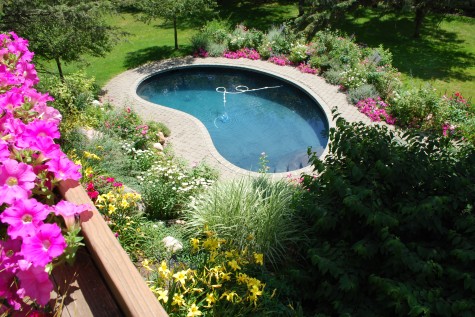
Pools with dark interior surfaces reflect light. A swimming pool that doubles as a reflecting pool has a long season of use. Dark surfaced pools absorb the energy from the sun-the water will be warm, but the bottom of the pool is usually obscured. Cathy’s pool is very unusual, as it can be seen from far above; she has a view of warm water in a dark surfaced pool, to the bottom. The interior color of her pool contrasts sharply with the surrounding garden. She gets as much from looking at her pool as being in it. The big idea here? Make moves that deliver at different times, in different seasons.
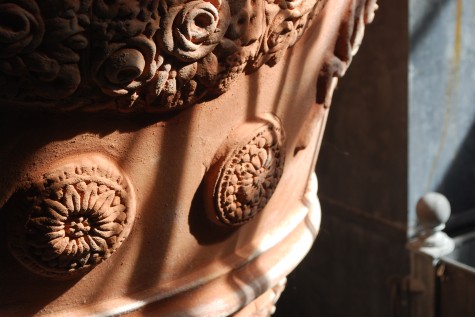 This handmade Italian pot is indoors until the weather reliably warms. Nevertheless, its detail is brought to life by the light of the spring sun streaming in the window. The surfaces closest to the light are white; the shadows are black. What goes on in between is a matter between you and your designer. Or between you and your gardening self.
This handmade Italian pot is indoors until the weather reliably warms. Nevertheless, its detail is brought to life by the light of the spring sun streaming in the window. The surfaces closest to the light are white; the shadows are black. What goes on in between is a matter between you and your designer. Or between you and your gardening self.

My fountain is 26 feet long-of course the conditions are different end to end, and they change, given the course of the day. Mostly sunny is the outlook for my home water-I am ready for it when I get home at the end of the day. On moody days, it is enough to just watch it. This post may seem to be a rambling late winter stream based on a lot of thoughts; you are right about that. I am waking up to lots of design work needing spring readiness. But this warm March day, I am also dreaming about a warm summer’s day, and some water.
Deborah Silver is a landscape and garden designer whose firm, Deborah Silver and Co Inc, opened its doors in 1986. She opened Detroit Garden Works, a retail store devoted to fine and unusual garden ornament and specialty plants, in 1996. In 2004, she opened the Branch studio, a subsidiary of the landscape company which designs and manufactures garden ornament in a variety of media. Though her formal education is in English literature and biology, she worked as a fine artist in watercolor and pastel from 1972-1983. A job in a nursery, to help support herself as an artist in the early 80’s evolved into a career in landscape and garden design. Her landscape design and installation projects combine a thorough knowledge of horticulture with an artist’s eye for design. Her three companies provide a wide range of products and services to the serious gardener. She has been writing this journal style blog since April of 2009.
Copyright © 2024 · Deborah Silver & Co. · Detroit Garden Works